issue contents
March 2006 issue

Cover illustration: The conserved hypothetical protein MAL13P1.257 from Plasmodium falciparum
structural genomics communications
The crystal structure of a conserved hypothetical protein from L. major, Pfam sequence family PF04543, structural genomics target ID Lmaj006129AAA, has been determined at a resolution of 1.6 Å.
PDB reference: Lmaj006129, 2ar1, r2ar1sf
The crystal structure of a conserved hypothetical protein, MAL13P1.257 from P. falciparum, has been determined at 2.17 Å resolution. The structure represents a new protein fold and is the first structural representative for Pfam sequence family PF05907.
PDB reference: MAL13P1.257, 1zso, r1zsosf
crystallization communications
Progesterone 5β-reductase is the first stereospecific enzyme in the pathway for the synthesis of cardenolides. To elucidate the structural mechanism of this reaction, we crystallized the selenomethionine-labelled enzyme from D. lanata and report the preliminary analysis of a MAD data set collected from these crystals.
The ligand-binding domain of rat SHPS-1 was purified and crystallized using the vapour-diffusion method with the solution-stirring technique.
Cytolethal distending toxin subunit CdtB from E. coli strain 9142-88 was purified and crystallized. Crystals belonging to space group P212121 diffract to a resolution of 1.72 Å.
The haemoglobin II from the clam L. pectinata has been crystallized using counter-diffusion in single capillary in the presence of agarose to improve crystal quality. Initial phases have been obtained by molecular replacement.
The class IV adenylyl cyclase from Y. pestis has been crystallized in an orthorhombic form suitable for structure determination.
A lectin from Trichosanthes dioica seeds has been purified and crystallized using 25%(w/v) PEG 2K MME, 0.2 M ammonium acetate, 0.1 M Tris–HCl pH 8.5 and 50 µl 0.5%(w/v) n-octyl β-D-glucopyranoside as thick needles belonging to hexagonal space group P64.
A C-terminal fragment of the Epstein–Barr virus lytic switch protein ZEBRA has been crystallized in complex with DNA.
A novel cytochrome c nitrite reductase (TvNiR) has been isolated from the haloalkalophilic bacterium T. nitratireducens. TvNiR crystals were grown by the hanging-drop vapour-diffusion technique.
The C-terminal domain of the signaling protein Sts-1 has been expressed in bacteria, purified and crystallized and diffraction data sets have been collected from two crystal forms.
Human indoleamine 2,3-dioxygenase, a haem-containing dioxygenase, was crystallized. The crystal diffracted to 2.3 Å resolution.
Human ADP-ribosylhydrolase 3 (ARH3), which has been identified as an ARH by a sequence-similarity search and which cleaves the glycosidic bond of ADP-ribose attached to a protein, has been cloned, expressed, purified and crystallized in two different space groups.
Open  access
access
 access
accessThe novel protein Sso6206 has been crystallized; interestingly, the protein may form large multi-subunit oligomers.
E1 dehydrase, which is important in the biosynthesis of the 3,6-dideoxy sugar ascarylose and is the only known PMP-containing enzyme to carry out one-electron chemistry, has been crystallized and diffracted to 1.9 Å.
A lectin from C. roseum seeds (CRL) has been purified, characterized and crystallized.
The mutagenesis, crystallization and preliminary crystallographic analysis of M. arthritidis-derived mitogen is described.
S. dysgalactiae-derived mitogen, a superantigen, was crystallized. Crystals diffract to 2.4 Å at a synchrotron-radiation source and belong to space group P3/P31/P32, with unit-cell parameters a = b = 52.7, c = 62.4 Å, γ = 120° and one molecule in the crystallographic asymmetric unit.
Expression, purification, crystallization and phasing procedure are reported for the C-terminal domain of human KIN17.
The iron regulatory protein IRP1 has been crystallized in a complex with ferritin IRE RNA and a complete data set has been collected to 2.8 Å resolution.
A stable stoichiometric complex of archaeal DNA polymerase with proliferating cell nuclear antigen (PCNA) was formed using a PCNA monomer mutant and the complex was successfully crystallized.
Raucaffricine glucosidase, an enzyme involved in the biosynthesis of monoterpenoid indole alkaloids in the plant Rauvolfia serpentina, was crystallized by the hanging-drop vapour-diffusion method using PEG4000 as precipitant. The crystals diffract to 2.3 Å resolution and belong to space group I222.
The BC1534 protein from B. cereus was purified and crystallized and a native X-ray diffraction data set was collected to 2.5 Å using synchrotron radiation.
Tom70p is an important translocase of the outer membrane complex member and a major surface receptor of the protein-translocation machinery in the outer mitochondrial membrane. To investigate the mechanism by which Tom70p functions to deliver the mitochondrial protein precursors, the cytosolic fragment of yeast Tom70p (cTom70p) has been crystallized.
Cloning, expression, purification, crystallization and data collection are reported for a member of the SufE family of proteins involved in the biosynthesis of Fe–S clusters in prokaryotes. Diffraction data were collected to 1.9 Å resolution and an interpretable electron-density map has been obtained by molecular replacement.
Salicylate synthase, which catalyzes the first step in the synthesis of the siderophore yersiniabactin, has been crystallized. Diffraction data have been collected to 2.5 Å.
S. typhimurium biodegradative threonine deaminase (TdcB), a member of the β-family of PLP-dependent enzymes, has been overexpressed, purified and crystallized in three different crystal forms using the hanging-drop vapour-diffusion method.
The crystallization and preliminary X-ray analysis of a bacterial L-amino acid oxidase from R. opacus is described. The homodimeric protein contains one molecule of non-covalently bound FAD per monomer. Crystals with good diffraction properties were grown in two different orthorhombic space groups (P212121 and C2221).
The crystallization and preliminary X-ray diffraction analysis of AIM1g1, a βγ-crystallin domain of absent in melanoma (AIM1) protein from H. sapiens, is reported.
The crystallization and results of multiwavelength anomalous diffraction studies of a recombinant C3-inhibitory fragment of Efb from S. aureus are reported.
The molybdate-binding protein (ModA) from X. axonopodis pv. citri was crystallized with sodium molybdate in the presence of PEG or sulfate. The crystal diffracted to a maximum resolution of 1.7 Å and belongs to the orthorhombic space group C2221, with unit-cell parameters a = 68.15, b = 172.14, c = 112.04 Å.
A cytotoxin from Indian Russell's viper (D. russelli russelli) venom having multifunctional activity has been crystallized in space group P41. Larger crystals diffracted to 1.5 Å but were found to be twinned; preliminary data were therefore collected (2.93 Å) from a smaller crystal.
The overexpression, crystallization and preliminary diffraction analysis of E. coli YegS are reported.
Recombinant His-tagged XendoU, a eukaryotic endoribonuclease, appeared to aggregate in the presence of divalent cations. Monodisperse protein which yielded crystals diffracting to 2.2 Å was obtained by addition of EDTA.
Open  access
access
 access
accessA monodisperse truncation mutant of MxiH, the subunit of the S. flexneri type III secretion system needle, has been crystallized. SeMet derivatives and a uranyl derivative have undergone preliminary crystallographic analysis.
Neutron diffraction data of hydrogenated recombinant urate oxidase enzyme (Rasburicase), complexed with a purine-type inhibitor 8-azaxanthin, was collected to 2.1 Å resolution from a crystal grown in D2O by careful control and optimization of crystallization conditions via knowledge of the phase diagram. Deuterium atoms were clearly seen in the neutron-scattering density map.
A crystal of an engineered glutathione transferase adgstD4-4 (V107A) from A. dirus, which possesses an enzyme stability that is 32 times greater than the wild type, diffracted to 2.47 Å resolution in space group P3221.
addenda and errata
Free 



 journal menu
journal menu












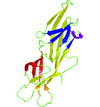


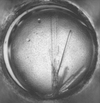




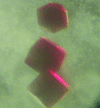












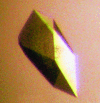









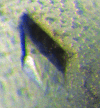
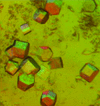




![[publBio]](/logos/publbio.gif)






